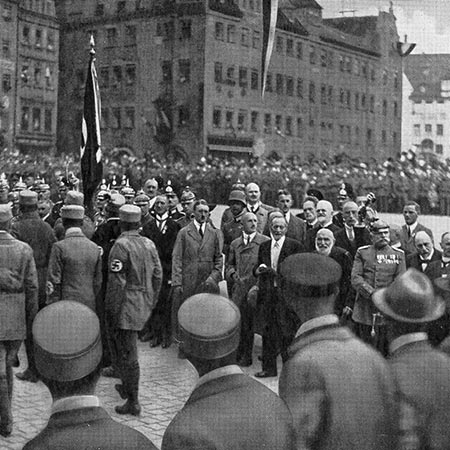Nuremberg in September 1923: more than 100,000 followers of right-wing organisations gathered on the main market square. Accompanied by large-scale riots, "German Day" marked a nationwide breakthrough for the Nazi movement.
Since its proclamation in 1918, Germany's first democracy had to repeatedly contend with assaults on its authority. The party scene was fragmented. Broad consensus was only found in rejection of the Treaty of Versailles and there was widespread refusal within society to accept the country's defeat in the First World War.
The picture shows "German Day" in Nuremberg: in 1923, to the cheers of numerous honorary guests from political, aristocratic and military circles, various patriotic and völkisch organisations paraded on Nuremberg's main market square. The leading protagonists of the fledgling Nazi party, Adolf Hitler and Julius Streicher, were prominent among them.
It was no coincidence that "German Day" was staged in Nuremberg: the völkisch anti-Semitic faction was bent on flaunting its strength in the industrial working class city characterised by social-democratic leanings. In the 1920s, local figures turned Nuremberg into a hub of the Nazi movement and anti-Semitism. The Weimar Republic was defended by committed local politicians. Civic society was not only politically divided – the cultural diversity of Weimar Modernism attracted both devotees and detractors. Economic recovery from 1924 onwards brought stability to the young democracy.
Nuremberg was an important venue: in 1920 the Social Democrats held a large party conference at Luitpold Grove. In 1927 and 1929, the Nazi party held its early party conferences there.



